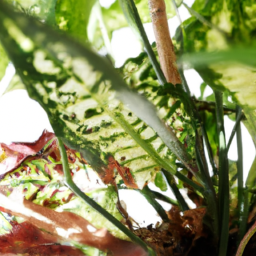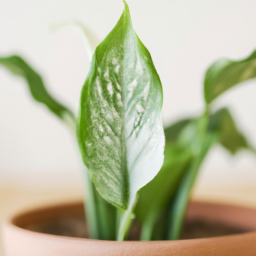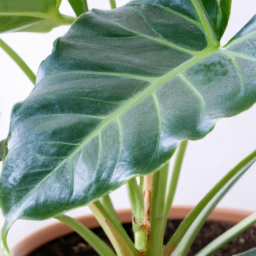
If you’re looking to bring some greenery into your home, you’ve come to the right place. In this blog post, we’ll be discussing the common types of houseplants that are perfect for adding a touch of nature to your living space. Whether you’re a seasoned plant parent or a beginner looking to start your indoor garden, we’ve got you covered with a variety of options that are easy to care for and will thrive in your home environment. So grab your watering can and let’s dive into the wonderful world of houseplants!
Popular Indoor Houseplants
Welcome to the wonderful world of indoor houseplants! Whether you’re a seasoned plant parent or just starting out, there are a wide variety of common houseplants that can thrive in your home. In this guide, we’ll explore some of the most popular indoor houseplants and provide tips on how to care for them.
Succulents
Succulents are a popular choice for indoor houseplants due to their unique shapes and low-maintenance nature. These plants store water in their leaves, making them perfect for busy plant parents who may forget to water them regularly. Some common types of succulents include aloe vera, jade plants, and echeveria.
When caring for succulents, it’s important to provide them with plenty of sunlight and well-draining soil. Water them sparingly, as overwatering can lead to root rot. Succulents thrive in bright, indirect light and can be placed near a sunny window.
To propagate succulents, simply remove a leaf from the plant and allow it to dry out for a few days. Once the leaf has calloused over, place it in soil and water sparingly until roots begin to form.
Spider Plants
Spider plants are known for their long, arching leaves and small white flowers that resemble spider webs. These plants are easy to care for and can thrive in a variety of conditions, making them a popular choice for beginners. Spider plants can be grown in hanging baskets or pots, and they prefer bright, indirect light.
When caring for spider plants, it’s important to water them regularly and provide them with well-draining soil. These plants are sensitive to fluoride and chlorine, so it’s best to use distilled water or allow tap water to sit out overnight before watering. Spider plants can also benefit from occasional misting to increase humidity.
To propagate spider plants, simply remove one of the plantlets that grows from the mother plant and place it in soil. Keep the soil moist until roots form, and then care for the new plant as you would a mature spider plant.
Pothos
Pothos, also known as devil’s ivy, is a popular indoor houseplant due to its trailing vines and ability to thrive in low-light conditions. These plants are easy to care for and can tolerate a wide range of temperatures, making them a versatile choice for any home. Pothos plants come in a variety of colors, including green, golden, and variegated.
When caring for pothos, it’s important to provide them with well-draining soil and water them when the top inch of soil feels dry. These plants prefer bright, indirect light but can also thrive in low-light conditions. Pothos plants can be propagated by taking stem cuttings and placing them in water until roots form.
One of the benefits of pothos plants is their air-purifying qualities, making them a great choice for improving indoor air quality. These plants can help remove toxins such as formaldehyde and benzene from the air, creating a healthier environment for you and your family.

Easy-to-Care-for Houseplants
Benefits of Easy-to-Care-for Houseplants
When it comes to choosing houseplants, many people are drawn to easy-to-care-for varieties. These plants require minimal maintenance and are perfect for those with busy schedules or little gardening experience. Not only are they low maintenance, but they also offer a range of benefits for both your physical and mental well-being.
One of the main benefits of easy-to-care-for houseplants is their ability to purify the air in your home. Plants such as spider plants, pothos, and peace lilies are known for their air-purifying properties, which can help remove toxins and improve air quality. This can have a positive impact on your overall health, reducing symptoms of allergies and respiratory problems.
In addition to their air-purifying abilities, easy-to-care-for houseplants can also help reduce stress and improve mood. Studies have shown that being around plants can lower cortisol levels and increase feelings of calmness and relaxation. Having plants in your home can create a sense of tranquility and connection to nature, which can be especially beneficial for those living in urban environments.
Furthermore, easy-to-care-for houseplants can also boost productivity and creativity. Having greenery in your workspace has been linked to increased focus and cognitive function. Plants can help create a more vibrant and inspiring environment, leading to greater motivation and efficiency. Whether you place them in your home office or living room, these plants can enhance your overall well-being.
Overall, easy-to-care-for houseplants offer a range of benefits for both your physical and mental health. They can purify the air, reduce stress, and boost productivity, making them a great addition to any home.
Popular Easy-to-Care-for Houseplants
There are many types of easy-to-care-for houseplants to choose from, each with its own unique characteristics and care requirements. Here are some popular varieties that are perfect for beginners or those looking for low-maintenance options:
1. Snake Plant (Sansevieria): Known for its striking vertical leaves and tolerance for low light, the snake plant is a great choice for beginners. It requires minimal watering and can thrive in a variety of conditions, making it a versatile and hardy plant.
2. Pothos (Epipremnum aureum): With its trailing vines and heart-shaped leaves, pothos is a popular choice for hanging baskets or shelves. This plant is extremely easy to care for, requiring only occasional watering and indirect light. It is also known for its air-purifying properties, making it a great addition to any room.
3. ZZ Plant (Zamioculcas zamiifolia): The ZZ plant is a tough and resilient plant that can tolerate low light and infrequent watering. Its glossy green leaves add a touch of elegance to any space, and its low maintenance requirements make it a great choice for busy individuals.
4. Spider Plant (Chlorophytum comosum): Spider plants are known for their long, arching leaves and small white flowers. They are easy to care for, thriving in bright, indirect light and requiring regular watering. Spider plants are also excellent air purifiers, making them a healthy and attractive addition to your home.
5. Peace Lily (Spathiphyllum): Peace lilies are beloved for their elegant white flowers and glossy green leaves. They thrive in low light and require regular watering, making them a great choice for beginners. Peace lilies are also known for their air-purifying properties, helping to create a clean and healthy indoor environment.
Overall, these popular easy-to-care-for houseplants are perfect for beginners or those looking to add some greenery to their home without a lot of maintenance. With their unique characteristics and benefits, these plants are sure to enhance your living space and improve your well-being.
Tips for Caring for Easy-to-Care-for Houseplants
While easy-to-care-for houseplants are low maintenance, they still require some basic care to thrive and grow. Here are some tips for caring for your easy-to-care-for houseplants:
1. Watering: Most easy-to-care-for houseplants prefer to dry out slightly between waterings. Check the soil moisture by sticking your finger into the soil – if it feels dry, it’s time to water. Be sure not to overwater, as this can lead to root rot and other issues.
2. Light: While many easy-to-care-for houseplants can tolerate low light conditions, they still need some natural light to thrive. Place your plants near a window where they can receive indirect sunlight, or supplement with artificial grow lights if needed.
3. Fertilizing: Easy-to-care-for houseplants generally do not require frequent fertilizing. Use a balanced, water-soluble fertilizer once a month during the growing season to provide essential nutrients for healthy growth.
4. Pruning: Regular pruning can help keep your easy-to-care-for houseplants looking neat and healthy. Remove any yellow or dead leaves, as well as any leggy or overcrowded growth. This will encourage new growth and help maintain the overall health of the plant.
5. Repotting: As your easy-to-care-for houseplants grow, they may outgrow their pots and need to be repotted. Choose a slightly larger container with good drainage, and refresh the soil to provide fresh nutrients for the plant. Repotting is typically done every 1-2 years, depending on the plant’s growth rate.
By following these tips for caring for your easy-to-care-for houseplants, you can ensure that they remain healthy and vibrant for years to come. With minimal maintenance and a little bit of love, these plants will continue to bring beauty and benefits to your home.

Trendy Varieties of Houseplants
Monstera Deliciosa
Monstera Deliciosa, also known as the Swiss Cheese Plant, has been a popular houseplant for years. Its large, glossy leaves with unique splits and holes make it a striking addition to any indoor space. This plant is relatively easy to care for, requiring bright, indirect light and regular watering. It can grow quite large, so be sure to provide it with enough space to thrive.
One of the reasons why Monstera Deliciosa has become so trendy is its versatility. It can be grown as a trailing plant in a hanging basket or trained to climb a moss pole for a more dramatic effect. Its unique appearance and low-maintenance nature make it a favorite among plant enthusiasts of all skill levels. Plus, its air-purifying qualities make it a great choice for improving indoor air quality.
If you’re looking to add a touch of tropical flair to your home, consider adding a Monstera Deliciosa to your collection. With proper care and attention, this trendy houseplant will bring beauty and style to your space for years to come.
Fiddle Leaf Fig
The Fiddle Leaf Fig is another trendy houseplant that has gained popularity in recent years. Its large, violin-shaped leaves and tall, slender trunk make it a striking focal point in any room. This plant thrives in bright, indirect light and prefers to dry out slightly between waterings. It is important to avoid overwatering, as this can lead to root rot and other issues.
One of the reasons why the Fiddle Leaf Fig has become so trendy is its Instagram-worthy appearance. Its lush, green foliage adds a touch of elegance and sophistication to any space, making it a favorite among interior designers and plant enthusiasts alike. With the right care, this plant can grow quite large, so be sure to provide it with enough room to spread out.
If you’re looking to make a statement with your houseplants, consider adding a Fiddle Leaf Fig to your collection. Its dramatic appearance and low-maintenance nature make it a great choice for adding a touch of glamour to your home.
Sansevieria
Sansevieria, also known as the Snake Plant or Mother-in-Law’s Tongue, is a trendy houseplant that has been gaining popularity in recent years. Its long, sword-shaped leaves and striking variegation make it a unique addition to any indoor space. This plant is incredibly easy to care for, thriving in low light conditions and requiring minimal watering.
One of the reasons why Sansevieria has become so trendy is its air-purifying qualities. This plant is known for its ability to remove toxins from the air, making it a great choice for improving indoor air quality. In addition to its health benefits, Sansevieria is also incredibly versatile, able to thrive in a variety of conditions.
If you’re looking for a low-maintenance houseplant that packs a visual punch, consider adding a Sansevieria to your collection. Its unique appearance and air-purifying qualities make it a great choice for both beginner and experienced plant enthusiasts.
Summary Snapshot
Houseplants are a great way to bring a touch of nature into your home and add some greenery to your living space. There are many different types of houseplants to choose from, each with its own unique characteristics and care requirements. Some common types of houseplants include succulents, which are known for their ability to store water in their leaves and stems, making them perfect for those who tend to forget to water their plants. Another popular type of houseplant is the spider plant, which is easy to care for and known for its long, arching leaves.
If you’re looking for a low-maintenance option, you might want to consider a snake plant, also known as mother-in-law’s tongue. This plant is incredibly resilient and can thrive in a variety of conditions, making it perfect for beginners or those with a busy schedule. For those who want to add a pop of color to their space, flowering houseplants like orchids or African violets are a great choice. These plants can brighten up any room with their beautiful blooms and are sure to bring a smile to your face. No matter what type of houseplant you choose, adding a few to your home can help improve air quality, reduce stress, and create a more inviting atmosphere.
Top FAQs:
Q1: What are some common types of houseplants?
A1: Some common types of houseplants include pothos, snake plants, spider plants, peace lilies, and rubber plants. These plants are popular choices for indoor spaces due to their low maintenance requirements and ability to thrive in various lighting conditions.
Q2: How do I care for pothos plants?
A2: Pothos plants are easy to care for and thrive in indirect light. They prefer well-draining soil and should be watered when the top inch of soil feels dry. Pothos plants can also benefit from occasional pruning to encourage new growth and maintain their shape.
Q3: What are the benefits of having snake plants in my home?
A3: Snake plants, also known as mother-in-law’s tongue, are known for their air-purifying qualities. They can help remove toxins from the air, making them a great choice for improving indoor air quality. Snake plants are also low maintenance and can tolerate low light conditions.
Q4: How often should I water my spider plant?
A4: Spider plants prefer to dry out between waterings, so it’s best to water them when the top inch of soil feels dry. Overwatering can lead to root rot, so it’s important to allow the soil to dry out slightly between waterings. Spider plants also benefit from occasional misting to increase humidity.
Q5: Can peace lilies be grown in low light conditions?
A5: Peace lilies can tolerate low light conditions, making them a great choice for areas with limited natural light. However, they will thrive and produce more flowers in bright, indirect light. Peace lilies should be watered when the top inch of soil feels dry and benefit from occasional misting to increase humidity.
Dr. Olivia Green is a botanist with over two decades of experience in indoor plant cultivation. She holds a Ph.D. in Plant Biology and has dedicated her career to researching plant behavior in controlled environments. Dr. Green is passionate about helping plant enthusiasts master the art of indoor gardening through her extensive knowledge and practical insights.


